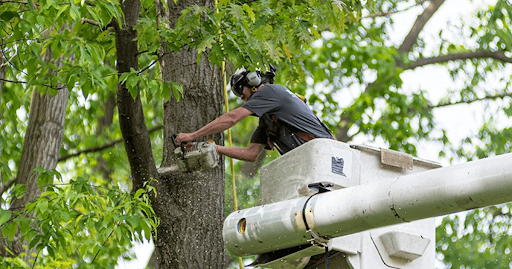Introduction to Tree Removal
Tree removal is a significant aspect of arboriculture and land management. Whether it’s for safety concerns, aesthetics, or environmental reasons, the process of removing trees requires careful planning and execution. In this guide, we will delve into various aspects of tree removal, including reasons for removal, methods, considerations, and environmental implications.
Reasons for Tree Removal
Safety Hazards
Trees can pose significant safety hazards when they are diseased, damaged, or structurally compromised. Dead or decaying trees are especially hazardous as they are prone to falling unexpectedly, endangering property and lives. Removing such trees is essential to mitigate risks.
Property Damage
Overgrown trees with invasive roots can cause damage to foundations, sidewalks, driveways, and underground utilities. In urban and suburban settings, removing trees that threaten infrastructure is necessary to prevent costly repairs.
Aesthetic Purposes
Sometimes, trees may need removal to enhance the aesthetic appeal of a landscape. Overcrowded or poorly placed trees can obstruct views, create shadows, or clash with architectural elements. Removing such trees can improve the overall visual appeal of the surroundings.
Disease and Pest Control
Trees infected with diseases or infested by pests pose a risk to neighboring vegetation. Removing diseased or infested trees can prevent the spread of pathogens or pests, thereby safeguarding the health of other plants in the vicinity.
Property Development
In the context of property development, tree removal may be necessary to clear space for construction projects, roads, or infrastructure expansion. While this is often a last resort, it’s sometimes unavoidable for urban development projects.
Environmental Considerations
In certain cases, tree removal may be carried out for ecological reasons, such as eliminating invasive species that threaten native biodiversity or restoring natural habitats to their original state.
Methods of Tree Removal
Cutting and Felling
One of the most common methods of tree removal involves cutting down the tree and felling it to the ground. This method is suitable for trees in open areas with ample space for the tree to fall safely. It requires skilled arborists equipped with chainsaws, ropes, and rigging gear to ensure controlled descent and minimal damage to surrounding structures.
Climbing and Rigging
For trees located in confined spaces or near structures, climbing and rigging techniques are employed. Arborists climb the tree using specialized equipment and carefully dismantle it in sections, lowering each piece with ropes and pulleys to prevent damage to property below.
Crane-Assisted Removal
In situations where traditional methods are impractical or unsafe, crane-assisted removal may be utilized. A crane is used to lift and remove tree sections, allowing for precise control and minimal impact on surrounding structures. This method is ideal for large trees or those located in tight spaces.
Stump Removal
After the tree is felled, the remaining stump can be removed using various techniques, including stump grinding or excavation. Stump grinding involves using a specialized machine to grind the stump into small chips, while excavation entails digging out the entire stump and root system.
Considerations for Tree Removal
Permitting and Regulations
Before initiating tree removal activities, it’s essential to check local regulations and obtain any necessary permits. Many municipalities have ordinances governing tree removal to protect urban forests and ensure environmental sustainability.
Assessment of Tree Health
Prior to removal, trees should be assessed by certified arborists to determine their health and structural integrity. This evaluation helps identify potential hazards and informs the appropriate removal method to be employed.
Environmental Impact Assessment
Tree removal can have significant environmental implications, including habitat loss, soil erosion, and changes to microclimate. Conducting an environmental impact assessment helps mitigate these effects and identify measures to minimize ecological disruption.
Preservation of Native Species
In regions with diverse ecosystems, efforts should be made to preserve native tree species and promote biodiversity. When removing trees, consideration should be given to replanting native species to restore ecological balance and support local wildlife.
Safety Precautions
Safety should always be a top priority during tree removal operations. Arborists must adhere to strict safety protocols, including wearing appropriate personal protective equipment (PPE), securing work zones, and employing safe work practices to prevent accidents and injuries.
Waste Management
Proper disposal of tree debris and waste is crucial to minimize environmental impact and comply with local regulations. Recycling or repurposing wood chips and logs can be environmentally sustainable alternatives to landfill disposal.
Environmental Implications of Tree Removal
Habitat Loss
Tree removal can result in habitat loss for wildlife species that rely on trees for shelter, nesting sites, and food sources. It’s essential to mitigate this impact by preserving existing habitat features and creating new habitats through reforestation efforts.
Soil Erosion
The removal of trees can destabilize soil structure and increase the risk of erosion, especially on slopes and in riparian zones. Implementing erosion control measures such as mulching, terracing, and revegetation helps minimize soil erosion and preserve soil quality.
Carbon Sequestration
Trees play a crucial role in sequestering carbon dioxide from the atmosphere, helping mitigate climate change. Removing trees reduces the overall carbon storage capacity of ecosystems, contributing to increased greenhouse gas emissions.
Microclimate Modification
Trees provide shade, regulate temperature, and influence local microclimates. Removing trees can lead to changes in temperature, humidity, and wind patterns, affecting both natural ecosystems and human-built environments.
Impact on Biodiversity
The removal of trees can disrupt ecological communities and reduce biodiversity by eliminating habitat and food sources for various plant and animal species. Conservation efforts, such as habitat restoration and wildlife corridors, are essential to mitigate these effects and maintain ecosystem health.
Conclusion
Tree removal is a complex process that requires careful consideration of various factors, including safety, environmental impact, and regulatory compliance. By understanding the reasons for tree removal, employing appropriate methods, and mitigating environmental implications, arborists and land managers can effectively manage tree populations while preserving ecological integrity and enhancing human well-being.

